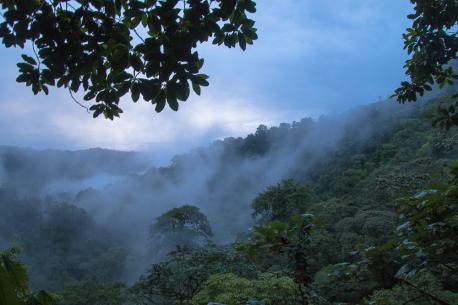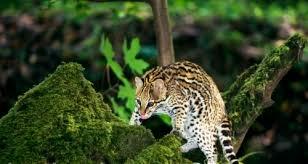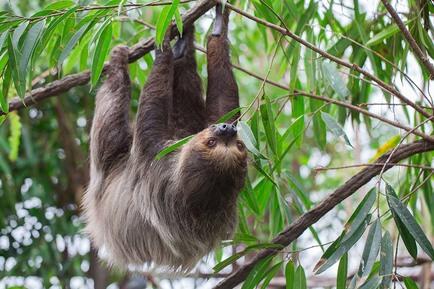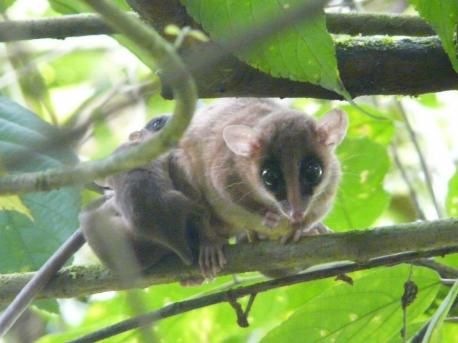Results: Ecuador cloudforest
Published on 02/06/2018
QUESTIONS
GO to COMMENTS
Comments
1.
1.
(Source: Metropolitan Touring) Shafts of light that filter through the canopy. The aroma of the forest's plants and flowers. The swirl of clouds through branches and trees. The sound of rain drops cascading onto leaves. Everywhere you look, you find life, in all its varied, surprising and multi-coloured forms. Did you ever visit the Ecuador Cloudforest?

Yes
5%
110 votes
No
95%
2084 votes
2.
2.
This is world of the upper and lower montane forest and rainforest ecosystem, part of the globally-important Tumbez-Chocó-Magdalena 'hot spot' of biodiversity. A profusion of plant species has adapted to these environments, creating an incredibly rich ecosystem of trees, vines, ferns, orchids and bromeliads, home to hundreds bird species, possibly thousands of orchid species, tens of thousands of insect species, as well as monkeys, peccaries and even puma. It's a system which is still revealing its secrets to science, still mysterious, still magical. If you didn't get to visit it, would you like to go there?

Yes
49%
1073 votes
No
48%
1050 votes
I've already been there
3%
71 votes
3.
3.
(Source: ecuadorcloudforest.com) What is a Cloud Forest and how is it different than a Rainforest? Well, our first Cloud Forest sensations will probably be moist, cool, green, lush. These first adjectives are important to describe a Cloud Forest. The rainy season is from January until May, with a lot of the precipitation in the form of mist and rain. Luckily the rain is predictable during this time and starts at about 2 PM and continues for a few hours giving us plenty of time to schedule our day activities. Because of the higher altitude, Cloud Forests are cool. The highest temperatures in Mindo are around 80F and the low at night is around 55F all year round! Because of the moisture and coolness (that slows evaporation), Cloud Forests are very green and lush. This unique climate allows loads of epiphytes, plants that live on other plants, to grow almost out of control. Are there any other cloudforests you can mention?

Yes
8%
186 votes
No
92%
2008 votes
4.
4.
Cloud Forests are more lush and cooler than lowland Rainforests. Rainforests have larger, silt laden, slow moving rivers, while Cloud Forests are characterized by fast moving, clear rocky rivers. Both are diverse, but which is more diverse? Well it depends on what and where you look. Cloud forests have beautiful overlooks due to the irregular, mountainous terrain, while Rainforests are flatter and often separated by swamps, lakes or streams. This is important in the distribution of species. Rainforests are incredibly diverse, but the plants and animals are more widespread while Cloud Forests, because of natural barriers, have many more range restricted or endemic species. If we look at epiphytes, such as Orchids, Cloud Forests are more diverse at tree species, Rainforest. Bird species? It probably depends on the size of the area observed. If you expand out a little and include a few valleys and mountains, plus different elevations Cloud Forests probably hold more bird species. Did you know any of these differences before this survey?

Yes
12%
264 votes
No
88%
1930 votes
5.
5.
While mammal species are difficult to see, over time on the El Monte reserve scientists and local people found: Central American Agouti, Ocelot, Margay, Red Brocket Deer, Paca, Tayra, Andean Coati, Three-Toed Sloth, and White-Fronted Capuchin Monkeys. There is also a high diversity of reptiles, amphibians, butterflies and other insects. Some of the interesting lizard species include the "Jesus Christ Lizard", which can walk on water and the very rare Proboscis Lizard. Frogs include various species of tree frogs, glass frogs, toads etc. Do you like the way the Jesus Christ lizard walks in the video?
Yes
41%
904 votes
No
12%
265 votes
Undecided
20%
449 votes
Not Applicable
26%
576 votes
COMMENTS


